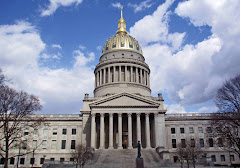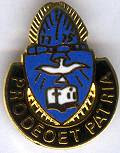The Pueblo Crisis Call-up -- 40 Years Later
On January 22, 1968, a "spy ship" which had been re-named "The USS Pueblo" and manned by a crew of US Navy seaman was captured by vessels from the People's Republic of Korea (more commonly known as North Korea), thus beginning an incident in Cold War History known as "The Pueblo Crisis." One of the results of that crisis was that approximately 26,000 Reserves and Guardsmen (and a few women) were called to active duty.
Most of the Reserves called up were in the Air Arm. They were from a variety of locations. In addition to DC, there were also units in
Ohio,
Kentucky,
Colorado, New York, New Mexico, South Dakota, Nevada, and several other states, involved. Only, recently has there been
any attempt to capture the story of those involved in the call-up. During most of my subsequent military career, the 1968 call-ups (there was a subsequent one of more forces following the "Tet Offensive") were forgotten, and even, by some who should have known better, treated as if it never happened. ("There have been no call-ups of the Guards or Reserves since the Korean War," was a refrain I often heard/read in my studies [1983-86] at the Command and General Staff College of the Army.)
Approximately 1/3rd of those called up eventually ended up serving a tour of duty in Korea, about 1/3rd of those called up served a tour in Viet Nam, and the rest, mostly the senior officers and NCO's, stayed in stateside assignments.
Since the original reason for the call-up was the capture of the ship and the crew by the North Koreans, you would have thought that our role played a direct part in the eventual resolution of the "Crisis." The
actual release of the crew occurred on January 1, 1969. Only a bare minimum of those Guardsmen/Reservists called to active duty had any direct role to play in the release. (Most of us were trying to find a way to "bring in" the "New Year" in a strange land, far away from family.) The ship, still considered in active service, is still held by the People's Republic of North Korea. It has never been recovered, nor, to the best of my knowledge, have we ever made any attempts at recovery.
I was one of those called up. Further, I was part of the group that ended up serving a tour of duty in the Republic of Korea (also commonly known as "South Korea"). Yes, I had joined the Guard to avoid the Draft (this was before they had developed the "Lottery System"), and ended up on active duty anyway. Thus began a very unlikely 31 year military career.
I received the call from my mother at my then place of work,
The Powder Magazine at
Colonial Williamsburg, on the day of the call-up. I had just started my second semester of work in the
Graduate School of Education at The College of William and Mary. It had just started to snow. I told my boss what had happened, and he called his boss to let him know. Then I went to where Alice, my wife, was working, and told her. Next I went to our apartment, packed up my military gear, threw it in our car, and in a by-then driving snow storm, took off for my parent's home outside of DC, near where I was to report. The snow was awful that day and the traffic on I 95 was horrific. It was made worse by the occasional individual who was going to travel 60 miles an hour in the passing lane, regardless of the conditions. Invariably, a mile or two down the road, I, and the rest of us "slow-pokes," would pass this "smart" individual over in the median, sometimes on their side. But, somehow I made it up, and reported as required the next day.

This is a picture of the waters off the West Coast of Korea. I was standing approximately 7-8 miles from the DMZ which separates the two Koreas. Thus, this shot is taken less than 30-40 miles from where the Pueblo incident actually occurred.
There is a Honduran connection to this story after all. I was in our base camp, Camp Powderhorn, on the 20th Anniversary of my call-up. But since this was Honduras, instead of snow, as is obvious from the picture, we had rain. I remember passing a friend who had a Polaroid and stopping him and asking him to take my picture.
He asked: "Why?"
I replied: "Anniversary."
"
Of your wedding?"
"Not hardly. . ." And then I went on to explain.
Thus he took the picture and gladly gave it to me.

Today it is cold and blustery. We have a few remnants of the snow that fell on Thursday. But otherwise it is, what can I say: "A January Day."
Hopefully, it will not be as significant as some previous January 26's.





































